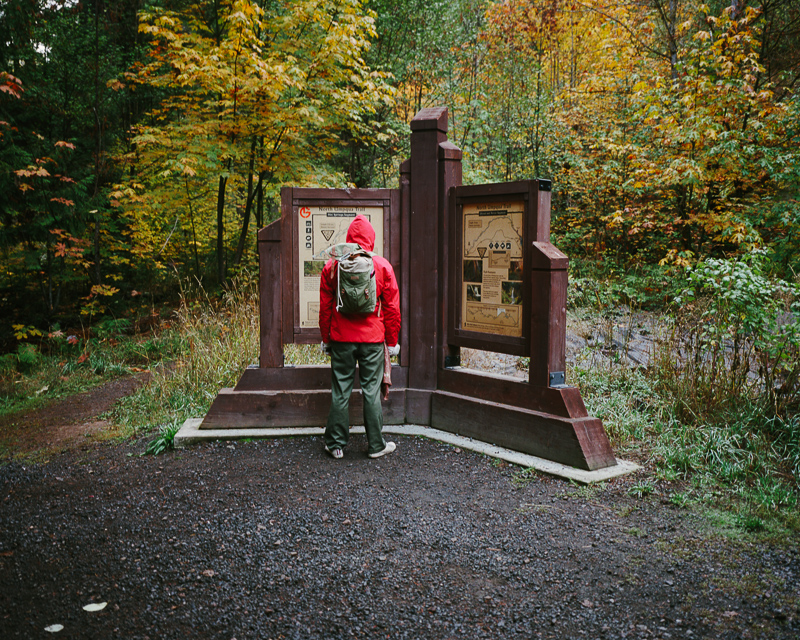Words by Daniel Wakefield Pasley. Photographs by Daniel Wakefield Pasley and Emiliano Granado.
UMPQUA HOT SPRINGS
On the subject of attendees, participants and Wizards. Just like watering holes, Mountain Man Rendezvous encampments, Bus Stops, Food Courts, midday corners in various cities around America and Occupy camps, Hot Springs are Public Gathering Venues-Nexuses-Places. Public Gathering Venue-Nexus-Places (PGV-N-Ps) are not just destinations or points on a map; they represent both a place and an intended use/design, which intended use/design in the case of Hot Springs is bathing maxin'-relaxin'-style in healing and/or otherwise therapeutic mineral waters.
It should be noted that many PGV-N-Ps possess a gravity incommensurate with their intended use/design—e.g. while in the case of Hot Springs many come for the water, just as many (if not more) come for the scene, which scene (this designation warrants reiteration) is public, as in public transportation (subways like the A/C between MetroTech and Fulton, city buses, mixed-use bike paths, etc.) and public libraries and public bathrooms. Those of you familiar with Public Anythings know the designation is effectively synonymous with a number of predictable qualities and attributes: lowest common denominator hygiene, opt-out performance art and unsolicited story time. The more practical or utilitarian a PGV-N-P’s is, the more boring its Adjacent Public Scene (APS) is: booger picking, caustic mobile phone conversations, Bucket Drummers, megaphoned alt-Jesus diatribes, etc. The more outdoor, the more secluded, the more metaphsyical and spiritual a PGV-N-P’s is, the more interesting its APS is.
To Yonder the pinnacle, or “highest," possible member of an APS is a Wizard.
To recap the above:
- Hot Springs are a Public Gathering Venue-Nexus-Place for Healing Water enthusiasts.
- Some people come for the water.
- Some, if not more, people come for the people who come for the water.
- This creates an Adjacent Public Scene in a spiritual place.
- This attracts Wizards, and Wizards are the best.
A short list, in no particular order, of non-healing-water-related reasons to visit a hot spring:
- To get naked in public.
- To be seen naked in public.
- To see other people naked in public.
- To sell people in various states of dress marijauna and other drugs.
- To chill.
- In the pursuit of a captive audience.
- For warmth.
- To swim.
- To meet German dudes and bussloads of Koreans.
- To casually engage in a cultural exchange.
- To steal underwear and shoes.
REGARDING HOT SPRINGS AND THEIR RELEVANCE
Words by Moi Medina.
On Subduction, Historical and Tectonic. History is an elusive creature. What we know of it is often times mired in hearsay, educated postulation, and faith - faith that what we know of a time past is an unvarnished truth. In 1592 the Spanish explorer Juan de Fuca sailed north from Acapulco, Mexico in search of the ‘Northwest Passage’- a long sought after route that would connect economies and cultures of the Atlantic with those of the Pacific, and save the perilous effort that sailing through Tierra del Fuego, Chile would take. The Greek born Juan de Fuca (Ioánnis Fokás) would explore the costal areas of the Pacific Northwest and believed the Peugeot Sound to be the long sought after ‘Northwest Passage’. His adventure, however, would soon turn folly, as claims of his discoveries were challenged and his existence disavowed for 300 years- mostly by the English who sought to claim historical precedence over the area. The irony is that the name given to the last remnants of the vast Farallon Plate is Juan de Fuca. This ancient tectonic plate, that once split open Pangaea, is responsible for much of the geothermal activity in the Pacific Northwest. Bullied to near extinction by the Pacific Plate, the Juan de Fuca Plate now finds itself pushed under, hidden, and erased beneath the massive North American Continental Plate. Just as Juan de Fuca- the historical figure- was by history. But yet even still the tectonic and historical figure remains.
Geothermal energy can manifest itself in various forms. From the mercurial geyser, the ominous steam vent, or the innocuous ‘hot spring’, the Earth’s core reaches, reverberates, a violent millennial history long since consumed and crust over by a habitable planet we suffer, sin, and survive on. An elusive history is all we are left with. A history that hides in remote areas attainable only to those who are engaged enough to stop, listen, and feel for a past that at times seems to want to do anything but be discovered. But yet discovered some of these places are. Lying on the western slopes of the Cascade Range the Bagby, Cougar, and Umpqua hot springs caress, flirt, with the Pacific Ring of Fire- a global chain of volcanic and geothermal activity zones. Life of course has been drawn to these portals of the past for centuries. Oceanic and terrestrial hot springs create the chemical and environmental conditions to create life. Cultures across the world have used hot springs as Lazarus pits. The Umpqua band of the Coquille people (who the hot springs are named after), drawn for it’s physical and meditative powers, practiced communing with both the past and the present here. Native Americans also frequented the Bagby hot springs long before Bob Bagby happened upon the site in 1880, and the waters themselves were mastered over into log baths and tubs. The hot springs that dot the Cascade Ranges are historical reverberations manifested as geothermal energy that will not let Juan de Fuca Plate die. As a historical figure he was erased from history, subsumed, subducted, just as his namesake plate is. The hot springs of the Cascade Range, however, reach and scream his name with every foot that is dipped in unprepared for the temperature of the water. Historical retribution for those that succumb to hubris… like nautical Icarus diving too close to the center of the Earth.
